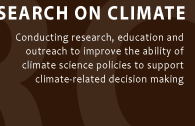

PART 2: |
|
COMMON MISPERCEPTIONS In our research we encounter four common but misleading assumptions about science-policy decision making. These assumptions have been and continue to be important drivers of the policies, practices, and institutions involved with science policy decision making. Not everyone holds these assumptions, but any individual in this arena must contend with them. MYTH #1: USABLE SCIENCE = APPLIED RESEARCH Many see the generation of usable science as synonymous with doing applied research. However, dealing with real world problems often requires advances in fundamental knowledge, or basic research. For example, much of the basic physical science research that the U.S. government funded after World War II was aimed at the military and political problems of the Cold War. A commitment to usable science for decision making does not imply the abandonment of basic research. MYTH #2: THE BENEFITS OF SCIENCE ARE COMPLETELY UNPREDICTABLE Science is often described as an unpredictable process, in which the most important discoveries are serendipitous. Though new knowledge may lead down unexpected paths, it is also true that the history of science in the past sixty years is one of powerful linkages between research priorities and social goals, especially in the area of technological advance. Indeed, most federal science—including basic research—is justified in terms of particular desired benefits. We cannot pursue all possible research directions, so we need to be skillful in deciding which ones deserve attention and resources. This is both a matter of reality, in that choices will be made, and experience, which tells us that some choices have better results than others. There is no reason to avoid thoughtful planning in pursuit of explicit goals. MYTH #3: MORE KNOWLEDGE IS ALWAYS USEFUL We often assume that solving a difficult problem requires more research, but not all knowledge is equally useful, and technical information makes up just one part of a larger system in which problems occur. It is important to consider the role of evolving knowledge, and the extent to which more of it is necessarily better. Sometimes we have adequate knowledge to address a problem, and additional research may not be the best approach. And, if we do want better information, we can ask “better in what way?” before we decide what kind of research is most appropriate to the task. |
 |
MYTH #4: DECISION MAKERS BENEFIT FROM SCIENCE AT THE END OF THE RESEARCH PROCESS As part of controversial issues, one commonly hears debate over whether the science is “settled.” But the scientific process almost never comes to final conclusions and often involves irreducible uncertainties. There is thus a tendency for scientists to want to wait until the end of a project or until all scientific uncertainties are resolved to engage decision makers. The problem is that without engagement early on, the research path taken may be irrelevant to decision maker needs. Moreover, there is valuable and useful knowledge to be imparted to decision makers despite uncertainties. For decision makers to benefit from science, they must be involved in the research process early and often. MOVING BEYOND THE MYTHS When individuals and institutions embrace the myths outlined above, the scope of options that science-policy decision makers consider is reduced. By setting aside some of these common misconceptions, and adopting a set of guidelines and concepts that ensure a strong connection between research and improved societal outcomes, science policy decision makers can become more open, creative, and effective in pursuing usable science. This guide begins to outline principles that can help foster decisions about science that more reliably respond to societal goals, while making a case for further engagement to build on this effort. We have divided the remainder of this guide into three sections. Section 3 presents a conceptual framework for thinking about science-policy decision making. Section 4 begins a discussion of how to use the framework in the real world. This section recognizes that many competing demands, and a variety of other obstacles, present challenges to science policy decision makers who wish to try a new way of doing things. Section 5 makes the case for continued engagement among science policy decision makers to share experiences and learn about best practices. |
|